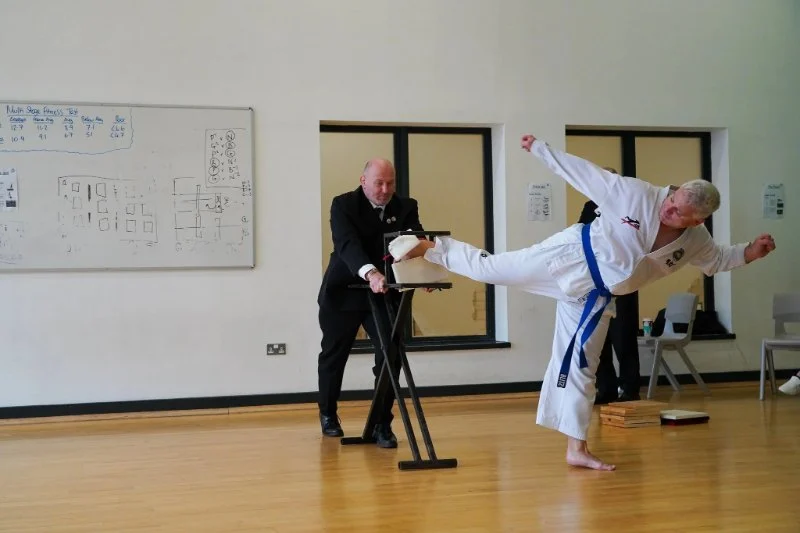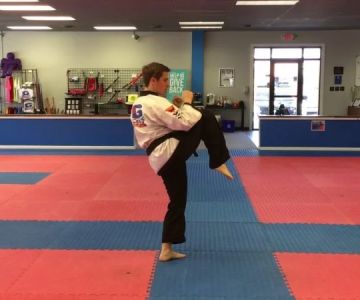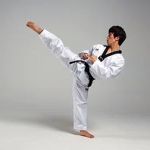
How to Execute a Step-Up Side Kick for Increased Power
The step-up side kick is one of the most dynamic and powerful moves in Taekwondo and other martial arts. It combines precision, timing, and explosive energy to deliver a strike that can break boards, knock back opponents, or showcase incredible athletic control in a demonstration. But to execute this kick with real power and safety, proper technique and conditioning are key. In this guide, we’ll break down how to perform a step-up side kick correctly, avoid common mistakes, and train for maximum strength and balance—just like the athletes at Jeuns TKD Hub.
- 1. Understanding the Step-Up Side Kick Technique
- 2. Preparing Your Body for Power and Balance
- 3. Step-by-Step Execution of the Step-Up Side Kick
- 4. Improving Power and Control Through Training
- 5. Common Mistakes and How to Fix Them
- 6. Real Case: How One Athlete Improved Their Side Kick Power
- 7. Where to Learn More – Jeuns TKD Hub
1. Understanding the Step-Up Side Kick Technique
The step-up side kick builds on the basic side kick but adds momentum and positioning advantage. By stepping up before kicking, you generate more kinetic energy, allowing for greater force at impact. This technique is widely used in sparring and breaking competitions because of its blend of speed, reach, and raw power.

Kwak’s Taekwondo / kwak taekwondo
Blue BellMontgomery CountyPennsylvania
1510 Dekalb Pike, Blue Bell, PA 19422, USA
The Mechanics Behind the Kick
In a step-up side kick, your front foot steps closer to your target, while your back leg becomes the kicking leg. The step-up not only shortens the distance but also loads your hips for an explosive release. The result: a cleaner, sharper, and more penetrating kick.

Kim's Hapkido Martial Arts / kim's hapkido
PasadenaLos Angeles CountyCalifornia
3324 E Colorado Blvd, Pasadena, CA 91107, USA
2. Preparing Your Body for Power and Balance
Before mastering the step-up side kick, you need to prepare your body with strength, flexibility, and balance training. Core stability is especially important since your torso controls the alignment and direction of your kick.
Key Muscles Involved
To execute this kick effectively, focus on building strength in your quadriceps, glutes, hamstrings, and obliques. Incorporate exercises like squats, lunges, and planks into your training routine. Stretching your hip flexors and hamstrings regularly will also improve your kicking height and control.
Balance and Coordination Drills
Practicing single-leg balance exercises, such as standing on one foot with eyes closed or using a balance board, can improve your ability to stay steady during the kick. Taekwondo practitioners at Jeuns TKD Hub often emphasize balance as the foundation of every powerful strike.
3. Step-by-Step Execution of the Step-Up Side Kick
Once your body is conditioned, it’s time to execute the step-up side kick with proper form. Follow these steps carefully to ensure safety and effectiveness:
Step 1: Start in Fighting Stance
Begin in a side-facing fighting stance with your feet shoulder-width apart and knees slightly bent. Keep your hands up to protect your face and maintain a stable base.
Step 2: Step Up and Load Power
Take a quick step forward with your front foot to close the distance. This movement transfers weight onto your front leg and positions your body for a powerful upward lift from the back leg.
Step 3: Chamber the Kick
Raise your back knee toward your chest while keeping your toes pointed down. Your heel should face the target, and your hips should rotate slightly inward to align for maximum impact.
Step 4: Extend and Strike
Snap your leg outward in a straight line, striking with the outer edge of your heel. Keep your eyes on the target and your upper body slightly leaned back for balance. The strike should feel like a controlled “push,” not a swing.
Step 5: Retract and Reset
After impact, quickly retract your kicking leg and return to your fighting stance. This helps maintain readiness and stability for follow-up moves or defensive positioning.
4. Improving Power and Control Through Training
Power in a step-up side kick comes from proper hip rotation, explosive speed, and strong retraction. To develop these, consistent training and resistance drills are essential.
Power Drills
Try resistance band kicks to strengthen the hip and glute muscles. Another effective drill is the “wall push” exercise—stand close to a wall, chamber your leg, and push your heel into the surface with controlled force for 10-second intervals.
Control and Speed Work
Practicing slow-motion kicks improves muscle memory and precision. It’s also helpful to perform repeated step-up motions without kicking to develop rhythm and timing. This is a common method used in Jeuns TKD Hub’s advanced sparring classes.
5. Common Mistakes and How to Fix Them
Even experienced martial artists can struggle with consistency in the step-up side kick. Recognizing and correcting these errors will dramatically enhance your form and power output.
Frequent Errors
- Leaning too far forward, which reduces kicking height
- Failing to chamber the knee correctly
- Overstepping during the step-up, losing alignment
- Striking with the toes instead of the heel
Correction Tips
Film yourself while practicing to identify balance or angle issues. Always focus on technique first before increasing speed or force. Over time, small corrections lead to noticeable gains in power and control.
6. Real Case: How One Athlete Improved Their Side Kick Power
Sarah, a second-degree black belt from California, once struggled to generate enough power during her sparring sessions. After working with a coach at Jeuns TKD Hub, she focused on her step-up timing and core engagement. Within two months, her side kick became one of her strongest offensive tools. Her journey highlights how refining technique—not just strength—can make all the difference in martial arts performance.
7. Where to Learn More – Jeuns TKD Hub
If you’re looking to improve your step-up side kick or other advanced Taekwondo techniques, Jeuns TKD Hub offers expert training programs, gear, and detailed tutorials for all levels. Whether you’re a beginner or preparing for your next belt test, their guidance ensures safe, powerful, and professional-level skill development.
Mastering the step-up side kick takes time, patience, and precision. With proper training and focus, it becomes not just a move—but a signature expression of power and control in martial arts.







 Rodriguez Taekwondo4.0 (29 reviews)
Rodriguez Taekwondo4.0 (29 reviews) Genbukan Kobushi Dojo5.0 (16 reviews)
Genbukan Kobushi Dojo5.0 (16 reviews) Tigereye TaeKwonDo, Inc.5.0 (20 reviews)
Tigereye TaeKwonDo, Inc.5.0 (20 reviews) Colorado Martial Arts Academy5.0 (27 reviews)
Colorado Martial Arts Academy5.0 (27 reviews) Double Dragon Tang Soo Do4.0 (138 reviews)
Double Dragon Tang Soo Do4.0 (138 reviews) Steve Fisher Karate Studio5.0 (7 reviews)
Steve Fisher Karate Studio5.0 (7 reviews) How to Execute a Jumping Roundhouse Kick to the Head
How to Execute a Jumping Roundhouse Kick to the Head How to Execute a Double Kick Combination in Sparring
How to Execute a Double Kick Combination in Sparring How to Perform a Flawless Axe Kick: A Step-by-Step Guide
How to Perform a Flawless Axe Kick: A Step-by-Step Guide DIY Tae Kwon Do Training Equipment for Home Practice
DIY Tae Kwon Do Training Equipment for Home Practice How to Increase Your Vertical Jump for Tae Kwon Do Flying Kicks
How to Increase Your Vertical Jump for Tae Kwon Do Flying Kicks The History of the Tae Kwon Do Peace Corps
The History of the Tae Kwon Do Peace Corps